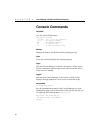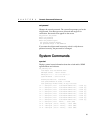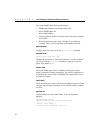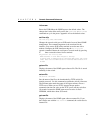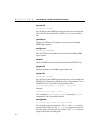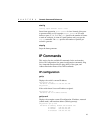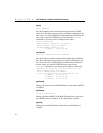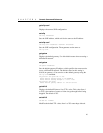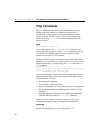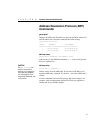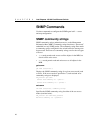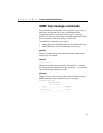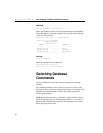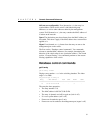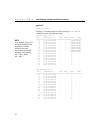
46
CHAPTER 3
Intel Express 10/100 Fast Ethernet Switch
Ping Commands
The ping command sends an Internet Control Message Protocol
(ICMP) echo request packet to a station. The ping process is
asynchronous, so any responses are mixed in with other system
console messages. For this reason, it’s best to avoid typing other
commands (except
ping-stop, which cancels the ping) while the
process is active.
ping
ping <IPaddress> {<number>|0}
You can ping a device (at IP address) a number of times or 0 for
endless ping. The ping process sends a
number of datagrams, one per
second. One line of output appears for every response received.
Normal response time is 1 to 10 seconds.
The ping command tests the connectivity between the switch and an
IP station. It is not intended as a traffic generator, so it’s best to avoid
using an endless ping. To stop the ping, use cC or enter the
ping-
stop
command.
SYS_console> ping 192.1.1.1 10
129.001.001.001 Alive. echo reply: id 297, seq 4, echo-data-len 8
PING process stopped - press <CR> for prompt
— press <CR> to get the prompt again
If the IP station doesn’t respond, the console prompt appears and no
output is added. Failure to get an echo response from an IP station
may be due to the following:
• A bad physical connection.
• A nonexistent or inactive IP station.
• Network unreachable: no corresponding entry in the routing table.
• Destination unreachable: the default gateway failed to route the
datagram.
• Outdated Address Resolution Protocol (ARP) table information.
Clear the ARP table with the
del-arp-entry command.
If there’s an active ping process due to a previous “long” ping
command and you try to start a new ping, the command fails.
ping-stop
Stops the active ping process. You can also press cC.



